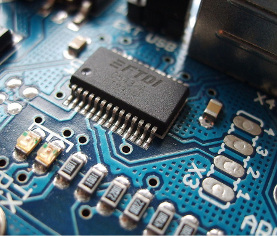Radiation-Hardness Components at scaled technology nodes

The space radiation environment is a key challenge for all types of space missions particularly because it can affect the operation of spacecraft electronics leading to performance degradation or even catastrophic failure. The resulting effects of this interaction are commonly referred as total ionizing dose (TID), displacement damage (DD) and single-event effects (SEEs). TID is the cumulative damage caused by ionizing radiation over the time of exposure, inducing transient photocurrents and in the long-term creating leakage paths and threshold shifts. SEE results from a high-energy particle travelling through a semiconductor and leaving an ionized track behind, which can cause bit-flip, latch-up or burnout. To cope with these aspects, the space industry can rely on commercial off the shelf components (COTS), Radiation Hard by Process components (RHBP) or Radiation Hard by Design components (RHBD). The unsuitability of COTS and the effort and cost of a RHBP component makes RHBD components the standard solution. RHBD strategies include triple mode redundancy (TMR) within layout, dopant well and isolation trenches circuit layout design, error correction circuitry (ECC) and device spacing and decoupling design rules.
In later years the total dose hardness (TID) of commercial solutions has improved mainly due to technological improvements in thin gate oxides and increasing semiconductor doping levels. However, with current scaling in COTS, SEE are a reliability concern for sub-65 nm CMOS due to the small amounts of charge representing each bit, high clock speeds, low operating voltages and high packing densities. On the other hand, the semiconductor industry has found ways of scaling below 45 nm using FinFET (Fin Field Effect Transistor) and Ultra-Thin Body & BOX Fully Depleted Silicon On Insulator (UTBB FDSOI). Despite the reliability concerns, in FDSOI the combination of SOI with high doping levels results in insensitivity to TID, and at scaled nodes such as 28 nm (far from the current european space circuit node standard), brings an expected increased robustness to SEE.
The explored radiation hardness of FDSOI at 28 nm is considered intrinsic and therefore suitable for COTS production which can in the future become the standard for Cubesats or small satellites.
In general, the possibility to have radiation hardness electronic circuits at scaled technology nodes brings advantages in terms of power consumption and performance which can enhance the operational capabilities of space missions.
the project
Together with the University of Saskatchewan, Canada, the ACT is performing research on FDSOI at scaled technology nodes beyond the european space circuit node standard for electronic circuits with enhanced capability.
The work is conducted in the framework of the Ariadna Project: “Radiation-Hardness Components at Scaled Technology Nodes (UTBB FDSOI28) – Test of Single-Events Effects in ARM Cores” - Study Reference Number: 15-7002. For more information please find the study description.